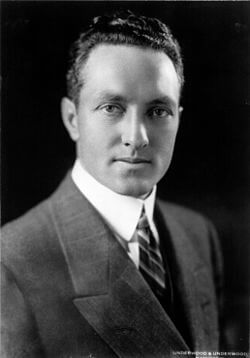Byrd was the first person to fly an airplane over the South Pole and who contributed greatly to the exploration and mapping of the Arctic regions

Yesterday, 25/10, 126 years ago Admiral Richard A. was born. Byrd, pilot, aviation pioneer, polar explorer and American geographer, the first person to fly an airplane over the South Pole and who contributed greatly to the exploration and mapping of the Arctic regions.
Byrd served in the US Navy before World War I and was discharged due to a leg injury, but during the war he requested to return to the service and then qualified as a pilot. In the last year of the war he commanded a squadron stationed in Canada, and during flights he made over the Atlantic Ocean he developed new navigation methods using drift indicators and sextant devices that show the horizon artificially (Bubble Sextant) so that it is possible to navigate using the stars.
After the war, thanks to Byrd's experience in navigation, he was appointed the planner of the first transatlantic flight, conducted in 1919 by three Curtiss NC-4 airplanes.
In 1926 Bird, together with pilot Floyd Bennett, left Spitsbergen Island for the first flight to the North Pole, in a three-engine Poker 7 plane. The duration of the round trip flight was over 15 hours, during which they covered a route of about 1,360 miles. After the journey, Byrd claimed that based on his calculations the plane arrived over the North Pole and passed over it.
Over the years that have passed since then, many doubts have been cast on his claim, which was based on navigational calculations only. In the documentation he recorded during the flight, erasures of calculations and corrections were found, and in addition, in the trip report he wrote afterward, there are differences in the data in relation to the calculations he made during the flight (for example, the height of the sun measured at a certain time by the sextant is different in both documents). In Bird's defense, it was claimed by a number of experts that the corrections were due to changing flight conditions (such as speed and wind direction), which changed his speed in relation to the ground and therefore it was necessary to repeat the calculations, as well as due to error corrections. The question actually remains open to this day, and today it is commonly assumed that the first people to fly over the North Pole were the Norwegian polar explorer Roald Amundsen, the Italian pilot Umberto Nobilla and their partners on the airship "Norga", who flew from Spitsbergen to Alaska via the North Pole, a few days after Byrd's flight .
In 1927 Bird participated in a competition announced for the first flight from the USA to France. Byrd was preparing to make the flight again in the Poker 7 plane, with his partner Floyd Bennett, but during one of the preparation flights the two had to crash land, and both were injured, Bennett seriously and Byrd lightly. A few days later, Charles Lindbergh made his historic flight and won the competition. Despite Lindbergh's victory, Byrd went on the mission anyway, after repairing his plane and with the help of pilot Brent Balchen, successfully completing it about a month after Lindbergh.
In 1929 Bird set out on his first trip to the South Pole, with the goal of being the first person to fly over it. This time he took with him on one of the ships a "Ford Trimotor" type plane, and a crew of three people: the pilot Balchen flew with him to France, the al-Houten and co-pilot Harold John and the photographer Ashley McKinley. During the flight, the four had to throw empty fuel tanks from the plane, as well as emergency supplies, in order to reach the required height above the level of the South Pole. After a round-trip flight of over 18 hours from the "Little America" research station to the pole, they completed the journey successfully, and this time there were no doubts about its success.
Byrd made another research trip to Antarctica in 1934, during which he spent 5 months alone in the winter at a meteorological research station, to document the winter conditions on the continent, during which he almost died due to the cold and gas poisoning emitted from the heating stoves. During World War II he was involved in mapping many islands in the Pacific Ocean in preparation for the establishment of airfields for the US Air Force and Navy, and after the war he commanded two more large research expeditions to Antarctica: "Highjump" in 1946-1947, and "Deep Freeze I" In 1955-1956, during which the permanent research stations on the continent were established, including the McMurdo base.
The Ford Trimotor plane in which Byrd and his crew flew to the South Pole was a passenger plane that was made entirely of metal for the first time, and was used in the 30s to fly passengers and light cargo (such as mail bags) across the United States. One of the preserved planes appeared, by the way, in two of the Indiana Jones movies. In the following video you can get an impression of the flight experience:

One response
His book about his stay alone in Antarctica was published in Hebrew and was called "Badad".